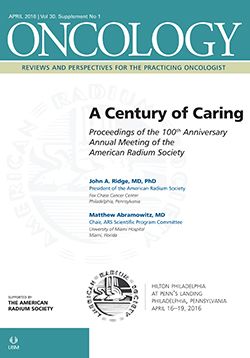(P043) Postoperative Bolus Electron Conformal Radiation Therapy for Soft Tissue Tumors: Initial Clinical Experience
Bolus electron conformal radiation therapy for the postoperative treatment of superficial soft tissue tumors resulted in favorable tumor control outcomes and limited radiation-related toxicity.
Christen R. Elledge, Anupama Chundury, MD, Jessika Contreras, MD, Lindsey A. Olsen, PhD, James Kavanaugh, MS, Imran Zoberi, MD, Jeffrey R. Olsen, MD; Georgetown University School of Medicine; Washington University School of Medicine
BACKGROUND: Achieving a conformal dose distribution for treatment of superficial soft tissue tumors (SSTTs) often presents unique challenges for targets of variable depth adjacent to organs at risk. A machine-fabricated, patient-specific compensator for bolus electron conformal radiation therapy (BECRT) provides a potential solution to such anatomic challenges. The purpose of this study is to report the technique and clinical outcomes for patients with SSTTs treated with BECRT at a single institution.
METHODS: The records of seven patients with SSTTs treated with postoperative BECRT were reviewed under an institutional review board–approved protocol. Histologic subtypes included pleomorphic undifferentiated sarcoma (n = 2), angiosarcoma, clear cell sarcoma, leiomyosarcoma, synovial sarcoma, and dermatofibrosarcoma protuberans (DFSP). Disease sites included cheek, ear, foot, leg (n = 2), and posterior chest wall (n = 2). All patients underwent definitive resection (wide local excision), and one patient received concurrent paclitaxel for angiosarcoma histology. One patient received brachytherapy prior to BECRT. Patients were followed with routine clinical and magnetic resonance imaging examinations for local recurrence and CT imaging for metastatic disease (DFSP excluded). Acute and late toxicities were assessed using the Common Terminology Criteria for Adverse Events version 4.03.
RESULTS: Median follow-up time was 20.3 months. Median age was 71 years (range: 28–82 yr). All patients presented with localized disease, and margin status was close or positive in 3 of 7 patients. The median prescribed dose was 6,300 cGy (range: 5,000–6,300 cGy), with a median dose per fraction of 180 cGy (range: 180–200 cGy). At last follow-up, all patients were without local recurrence; one experienced distant progression 24 months after completion of BECRT. Acute grade 1 radiation dermatitis occurred in all patients, and acute grade 2 radiation dermatitis occurred in one patient; however there were no grade ≥ 3 acute or late toxicities.
CONCLUSIONS: BECRT for the postoperative treatment of SSTTs resulted in favorable tumor control outcomes and limited radiation-related toxicity.
Proceedings of the 98th Annual Meeting of the American Radium Society -americanradiumsociety.org
